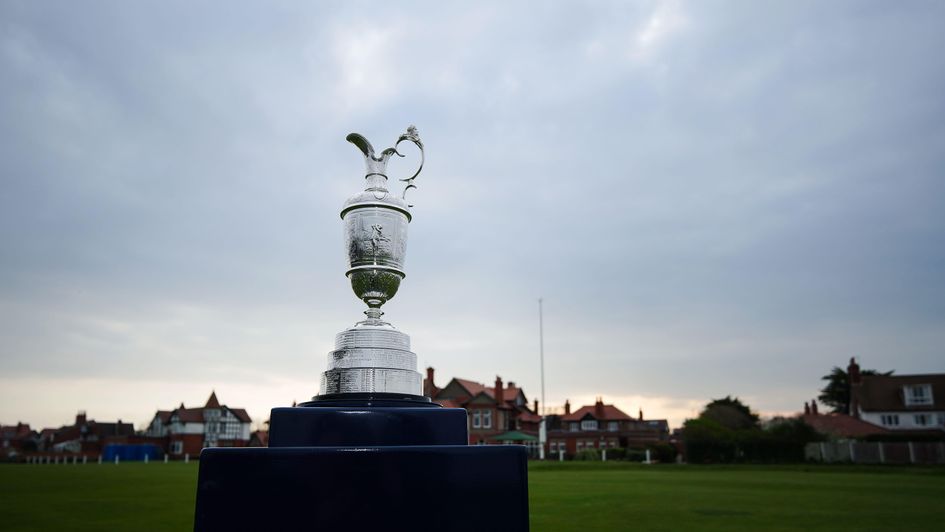Get familiar with Hoylake and its new 17th hole with our hole-by-hole guide to Royal Liverpool, venue for the 151st Open Championship from July 20-23.
1st (Royal), 459 yards, par four
The tee shot has to be threaded between bunkers and the approach hit to a heavily contoured green which is 40 yards long and protected by a group of bunkers.
2nd (Stand), 453 yards, par four
A new tee was built for the 2014 Open which added 18 yards to the length of the hole. An accurate tee shot is required to give the best approach to another heavily-guarded green.
3rd (Course), 426 yards, par four
Usually a daunting opening hole for the members, with the clubhouse left and out-of-bounds all the way down the right-hand side of the fairway, which also comes into play on the second shot as the hole takes a 90-degree turn to the right.
4th (Road), 367 yards, par four
The shortest par four on the course presents a good birdie opportunity. The out-of-bounds to the back and left of the green is unlikely to come into play for players attacking the pin with a short iron.
5th (Long), 520 yards, par five
Another good birdie chance on the only par five on the front nine. A tee shot to the corner of the dog-leg will allow players to go for the green in two, although three bunkers lie in wait to the right of the fairway.
6th (New), 201 yards, par three
The first par three requires an accurate tee shot to a long and narrow green which slopes from back to front and is guarded by bunkers on both sides.
7th (Telegraph), 481 yards, par four
A new tee for the 2014 Open added 27 yards. The best tee shot is down the right of the fairway, but that also brings heavy rough and heather into play. Par will be a welcome score here.
8th (Briars), 436 yards, par four
Picking the line for the blind tee shot will be crucial, with the fairway protected by gorse on the left and a bunker on the right. The green is surrounded by four bunkers but is a large target.
9th (Dowie), 218 yards, par three
A second difficult par three on the front nine, even though the bunker on the right of the green has been reduced in size. There is no bail out on the left of the green either, with a gully waiting to catch errant tee shots and leaving a treacherous chip.
10th (Far), 507 yards, par five
A good birdie chance, especially when played downwind to enable the green to be reached in two. The cavernous bunker to the right of the green is the place to avoid.
11th (Punch Bowl), 392 yards, par four
The best approach is from the left side of the fairway to a green which has seen a bunker removed from the back but the ones at the front repositioned to encroach more on the putting surface.
12th (Dee), 449 yards, par four
The bunkers on the corner of the dog-leg are likely to see a lot of traffic, leaving a difficult approach to the raised green which slopes markedly from back to front.
13th (Alps), 194 yards, par three
The narrow green is set at an angle to the tee and requires an accurate tee shot, particularly to the back-left hole location. The only bunker is very deep and causes problems when the pin is on the front.
14th (Hilbre), 454 yards, par four
A similar hole to the 12th which requires the approach to be hit to a narrow green sitting at a slight angle to the fairway. Tiger Woods holed out with a four iron for an eagle in round two in 2006.
15th (Field), 620 yards, par five
Previously the 16th hole, the 15th has been significantly lengthened since Rory McIlroy’s win in 2014. Three bunkers on the left must be avoided off the tee, while the approach has to avoid another three bunkers left of the green.
16th (Lake), 461 yards, par four
Formerly the 17th, the 16th is a challenging long par four, particularly if played into the prevailing wind. Bunkers either side of the fairway frame the landing area and more sand beside the long and undulating green makes for a difficult approach.
17th (Little Eye), 136 yards, par three
A brand new hole which will likely divide opinion due to the deep bunkers surrounding a raised “infinity” green which offers stunning views across the estuary.
18th (Dun), 609 yards, par five
Out-of-bounds all the way down the right-hand side of the sharp dog-leg makes for a daunting tee shot. Bailing out to the left will leave a much longer approach to a green protected by five bunkers.
